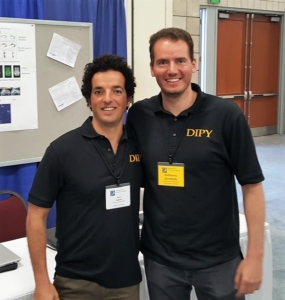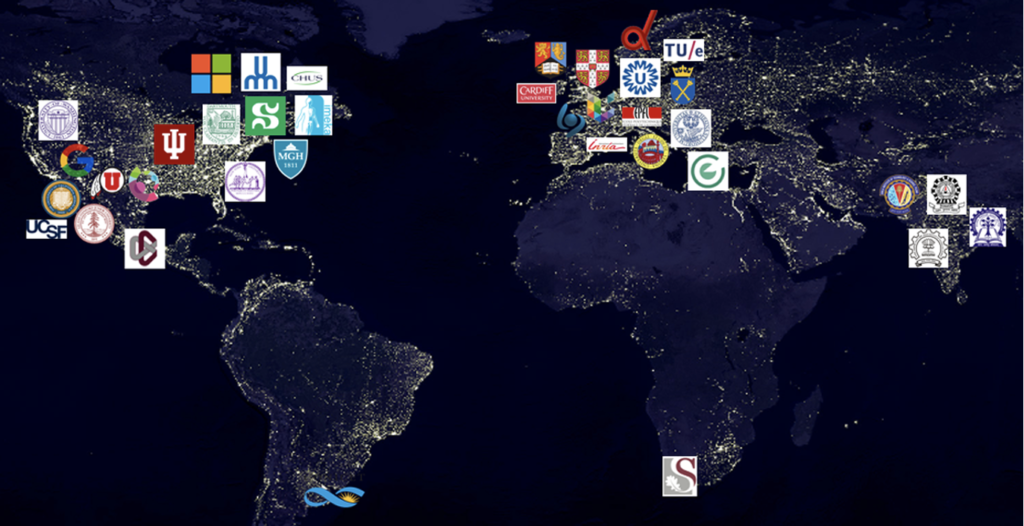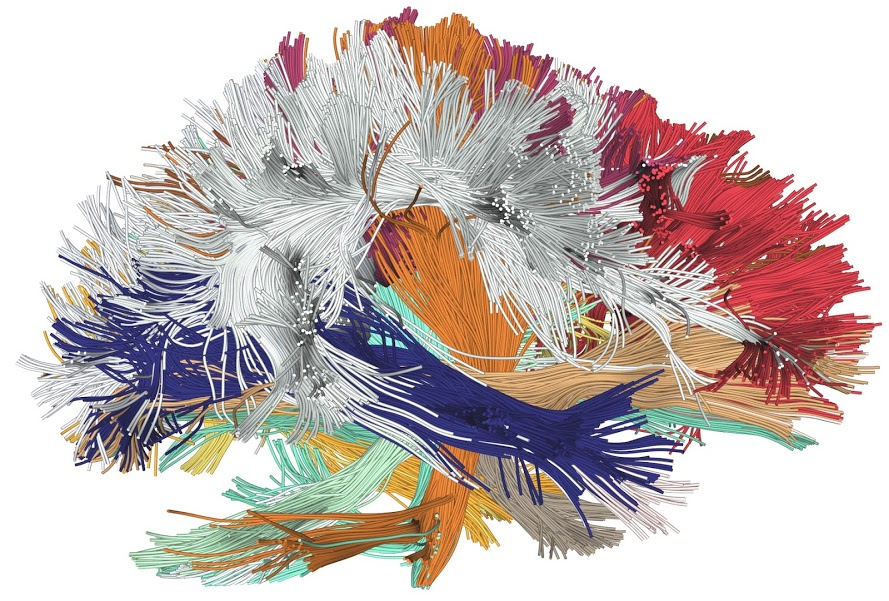
The National Institutes of Health have awarded the Diffusion MRI in Python (DIPY) project a three-year grant to facilitate the development of new methods for analysis of MRI data and dissemination of these methods through open source software. The grant, awarded through the Collaborative Research in Computational Neuroscience program, will fund a collaboration between researchers at Indiana University and at the University of Washington eScience Institute.
The DIPY project focuses on the analysis of neuroanatomical connections between different brain regions through a network of long-range connections that make up the “white matter” of the brain (see image, right). These connections have attracted increasing interest in scientific research, as it becomes clear that they play an important role in a variety of brain functions. For example, recent research from UW researchers using DIPY demonstrates that these connections can dramatically change when children learn to read.

But analysis of MRI data is often done through a combination of different techniques and software tools. The principal investigator of the DIPY project, Eleftherios Garyfallidis, an assistant professor of intelligent systems engineering at the Indiana University School of Informatics, Computing, and Engineering says: “The DIPY project will overcome the inherent limitations of current analysis methods, the lack of transparency and cohesion in the implementations of new algorithms, and the difficulties in scaling computationally intensive methods to large datasets”
The principal investigator of the UW sub-project, Ariel Rokem, a data scientist at the eScience Institute elaborates: “An important part of the research that we proposed focuses on development tools that will help MRI researchers to use cloud computing services for their research. This will enable complex and time-demanding analysis methods to be used on even large amounts of data”.
Garyfallidis started developing DIPY while he was a Ph.D. student at the University of Cambridge, and Rokem joined the effort while he was a postdoc at Stanford University. Now almost ten years into the development of the project, DIPY features contributions from more than 80 scientists from more than 20 universities around the world and has been used by thousands of scientists.
“The project is completely open by nature”, says Rokem, “we not only allow anyone to use the software as they would like, but we also welcome contributions from anyone in the world, so long as the code and ideas pass our review for scientific rigor and proper software engineering”.
The new grant will fund work on the software, as well as sharing of new and valuable datasets. In addition, the grant will fund an annual workshop at Indiana University designed to introduce new users to the software and to teach them how to become contributors.
For more information about the software, see: http://dipy.org.


